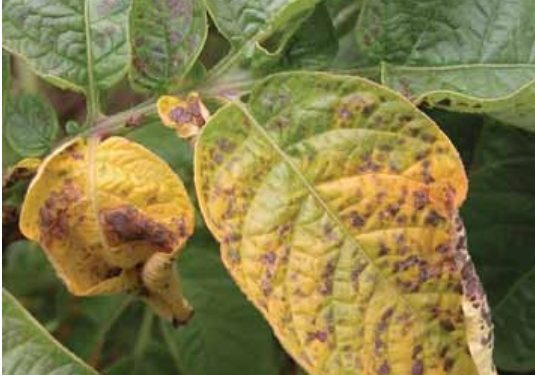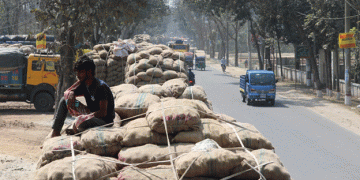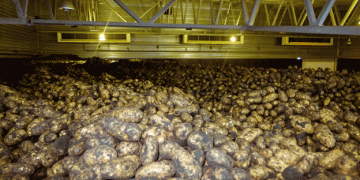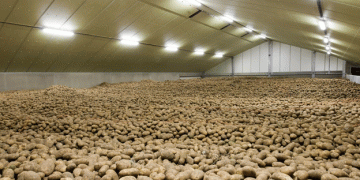Potato plants may be injured when exposed to high concentrations of various air pollutants. Injury can range from leaf damage to death of the plant. Severity of the
injury depends on environmental conditions, the concentration of the pollutants, the stage of development of the plant, the susceptibility of the variety and the overall
health of the plant.
The following environmental conditions will result in injurious levels of pollutants:
• Atmospheric ozone levels over 80 parts per billion (ppb) for 4 or 5 consecutive hours, or 70 ppb for a day or two are usually sufficient to injure plants
at a susceptible stage of growth.
• High levels of vehicle exhaust. Crop injury is often visible on fields in proximity to busy highways after heavy weekend traffic.
• Cloudy, hazy, overcast days and high humidity and little breeze result in a high concentration of pollutants at ground level and in hollows.
• Foggy conditions and heavy dew often cause air pollution damage.
Crop stress due to disease or environmental factors predisposes plants to air pollution injury
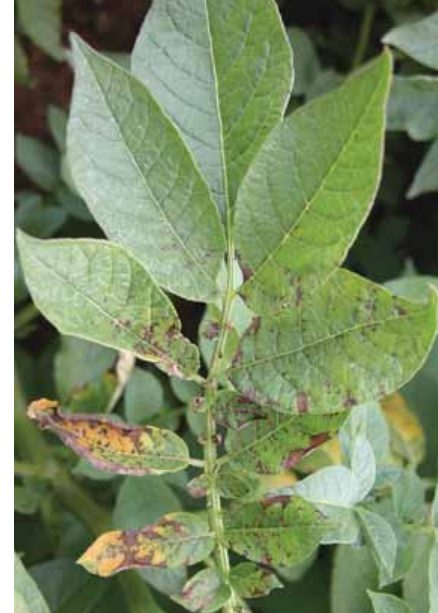
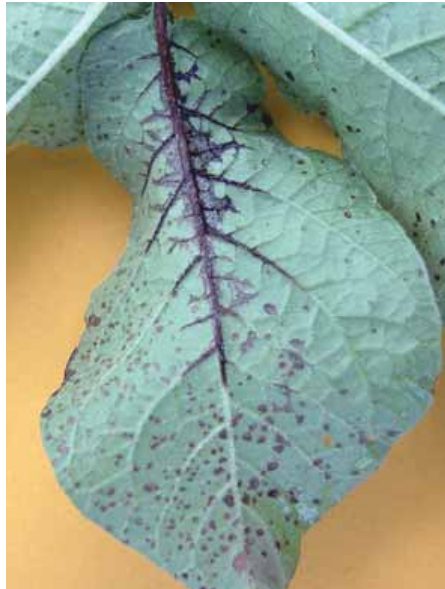
vein discolouration could be the result of
herbicide damage.
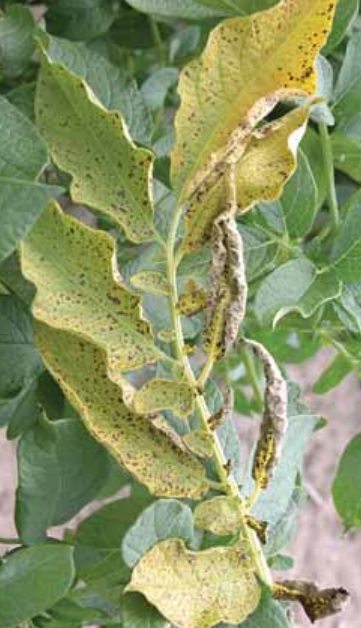
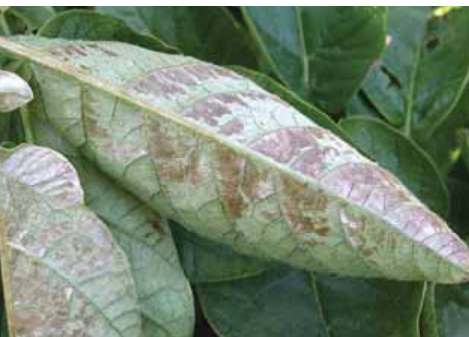
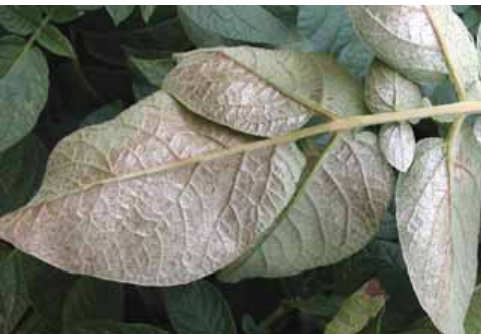
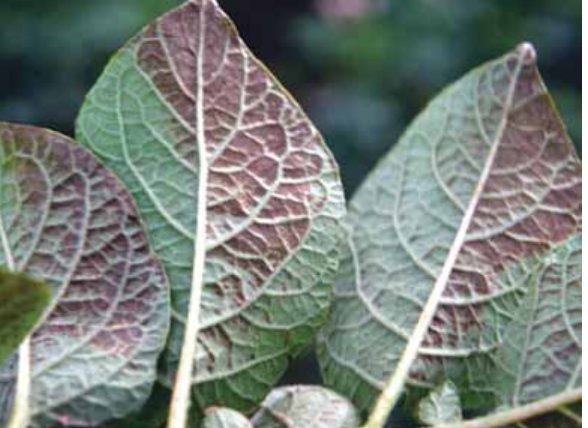
caused by peroxyacetyl nitrate (PAN).
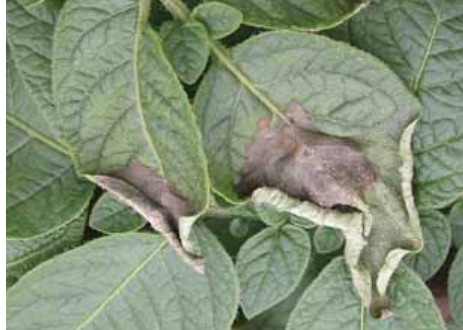
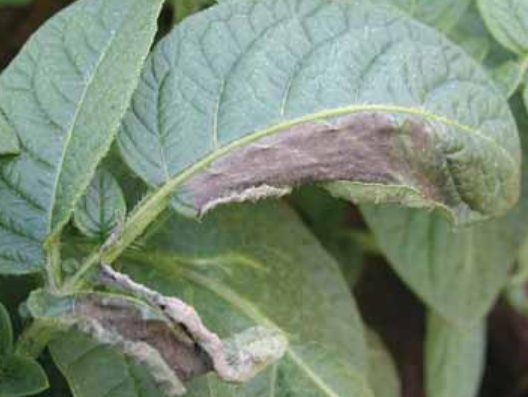
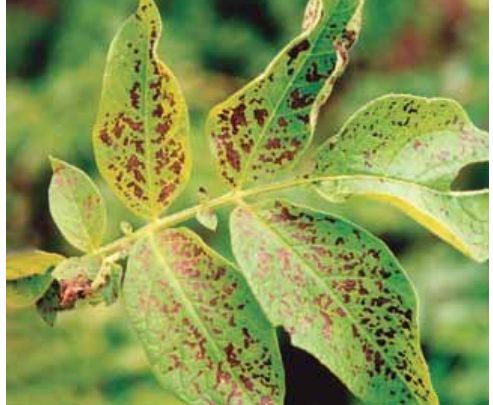

dioxide (SO2) injury.
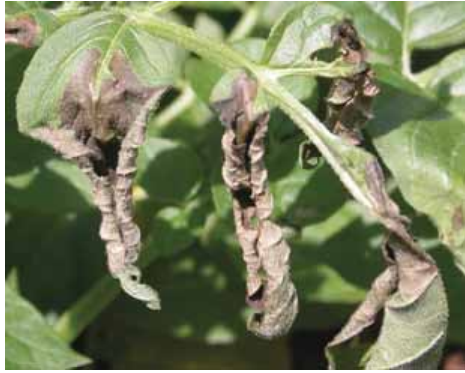
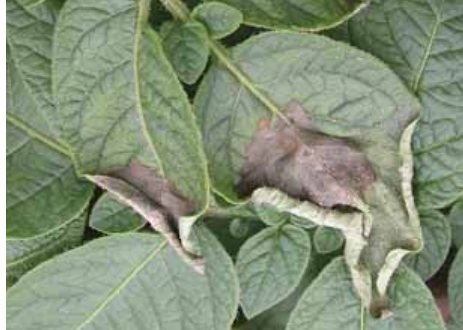
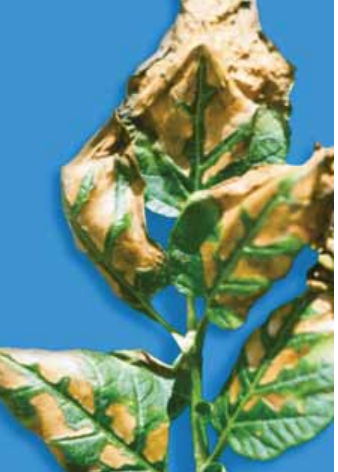
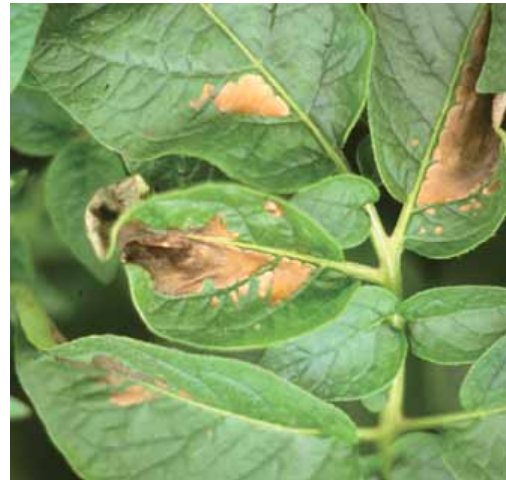
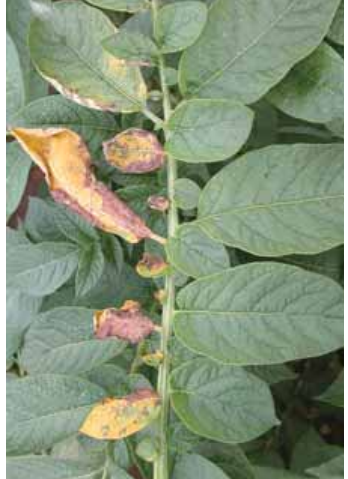
air pollution than the other.
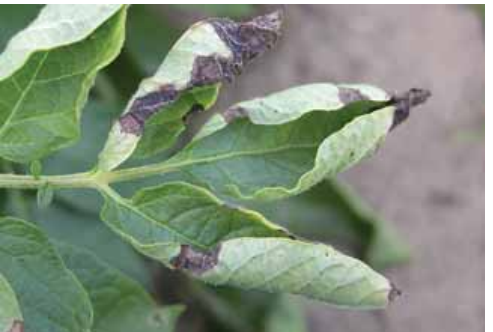

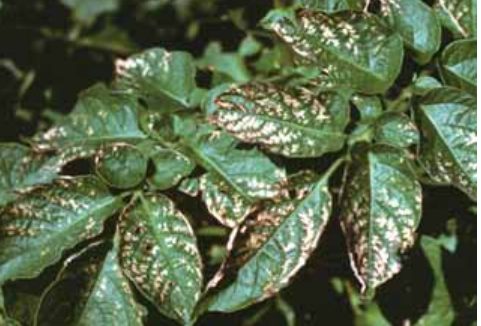
dioxide (SO2) injury.
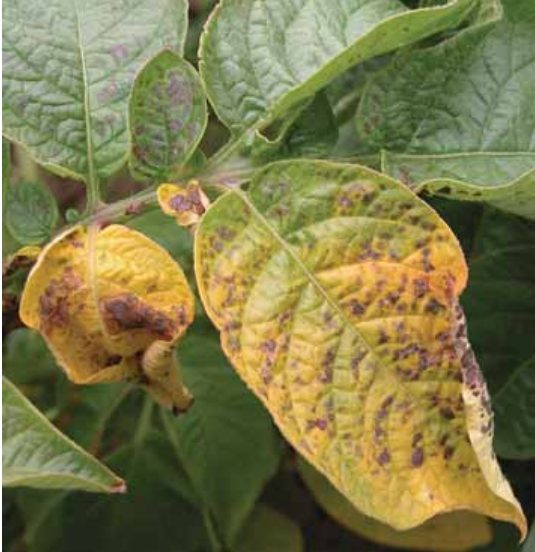
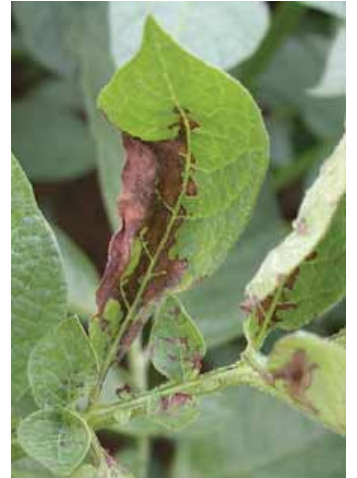
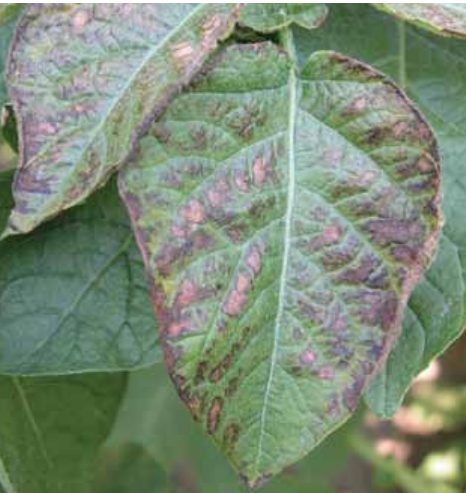
confused with leaf necrosis induced by PVY
